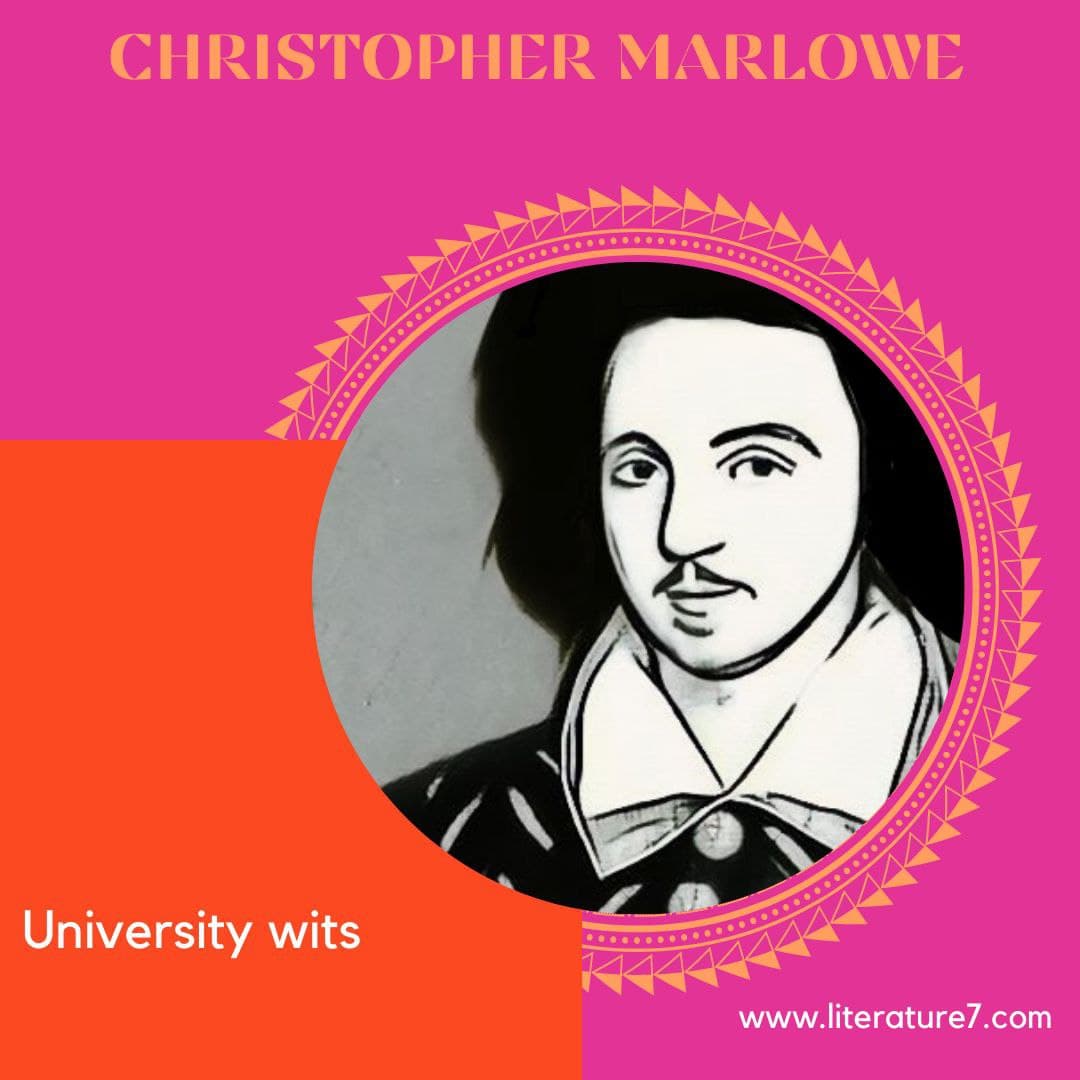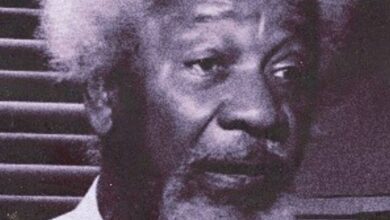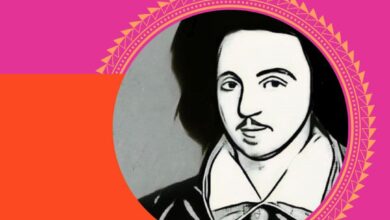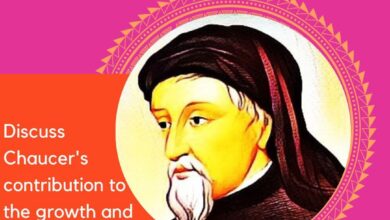Contribution of university wits in english literature

The pre-Shakespearean dramatists John Lyly, Robert Greene, George Peele, Thomas Kyd and Christopher Marlowe are collectively referred to as the ‘University Wits’ since they were all university-educated individuals. Their professions bear an uncanny resemblance. They were all performers and playwrights. They were intimately familiar with both the stage and the audience, and their sole objective was to satisfy the crowd and give them what they desired.
They began as actors, altered existing plays, and eventually established themselves as independent writers. This way, they gained a full understanding of their trade. They shared a common source of material—mythology, legend, and history—which explains their startling similarities in themes and personalities. They rarely invested in plots of their own. However, each of them contributed significantly to the development of English Drama in one way or the other, Shakespeare is indebted to each of them.
Before the University Wits began writing, two dramatic traditions were vying for mastery of the English Drama: the classic tradition and the popular theatre tradition. For select intellectual audiences, the scholars or humanists composed scholarly plays in the classical tradition.
Read more Critical analysis of songs of innocence and experience
The three fundamental concepts of classical Drama are as follows:
(a) The preservation of tone and action unity, i.e., retaining a portion of the tragic and funny. The action must be totally tragic or entirely comedic; there must be no blending of the two, as the tragedy was supposed to lose its potency due to the comic’s incursion. This way, all amusement was omitted from tragedy.
(b) Adherence to the three fundamental unities of time, location, and action. The setting must remain consistent, and the tale must not exceed a few hours, preferably the time required for the play’s staging. It must, in any event, not exceed twenty-four hours. This also meant that the dramatic personages’ personalities remained consistent throughout, as character changes are not conceivable within a few hours.
(c) Due to the indoor setting of the plays, forceful or aggressive action was deemed inappropriate. Combat, bloodshed, and other terrible events occurred offstage; they were recounted by the messenger. The classical Drama was devoid of action.
Read also Critical appreciation of ode on intimations of immortality
The English Drama of popular tradition disregarded these classical rules of dramatic composition:
(a) Temporal and spatial unities were abandoned. Scenes were regularly modified, and a toddler in one scene was transformed into a man in the next. The spectators’ imaginations were required to transcend the time and space divider.
(b) The dramatists allowed their imaginations to run wild and presented their entire lives in one location and one hour. Probability was ignored entirely.
(c) The stage was packed with ferocious, violent movements. On stage, fighting, bloodshed, scenes of violence, and even murder were brazenly displayed.
(d) Tragic and funny elements coexisted freely, as they do in life. Clowning and tomfoolery were integral aspects of popular culture.
(e) There was plenty of coarseness, crudity, and obscenity to appeal to the audience’s lower segments.
The national English Drama evolved from the synthesis of classical, courtly, and popular traditions, and the University Wits pioneered this combination. Each of them was a humanist, a man of new learning. They were so conversant with classical theatrical composition rules as well as the beauty and delicacy of courtly play. However, being performers, they were familiar with popular tastes. They devoted their abilities to the public stage, and as a result, their creativity was heavily impacted by audience tastes. They ignored the unities, embraced the universal need for action, and attempted to show life as it is. They provided the populace with the stage spectacles and magnificent performances they desired.
However, they contributed to the dramatic beauty of form and the clarity of structure. They omitted much of the crudeness and absurd extravagance associated with popular Drama. Thus, they assured “the dominance of that open and flexible type of play,” as Hudson puts it, which Shakespeare would later adopt.
Dramatic medium
The University Wits deserves credit for developing an appropriate dramatic medium. John Lyly was the first significant dramatist to write entirely in prose. He honed the comedic language and excelled at puns, conceits, funny banter, and all kind of wordplay.
Shakespeare’s early comedies, such as Love’s Labour’s Lost and A Midsummer Night’s Dream was written in his vernacular. Shakespeare owes the most outstanding debt to Marlowe, who polished blank verse and transformed it into an acceptable medium for dramatic expression. He infused flexibility into the text, ensuring that the sense does not end with each line but continues from one to the next. It is resonant and forceful and well merits the accolade “Marlowe’s great line.” However, it occasionally descends into vacuous bombast and declamation, flaws that only Shakespeare could cure. Shakespeare obtained the blank verse ready-made for his purpose, but he further improved and perfected it.
Art of characterization
The University Wits also made a significant contribution to the art of characterization. Margaret (in Friar Bacon and Friar Bungay), Robert Greene’s novel about a pure English country girl, is unique in English literary history. She is Shakespeare’s earliest drawing of a heroine. For the first time, a pure-hearted woman is depicted with love and grace. In Kyde, we get our first glimpse of Hamlet’s hesitant hero. As with Shakespeare’s tragic figures, Marlowe’s tragic figures are alive and authentic; they are not puppets but individuals who live their own lives and capture the imagination by the intensity of their feelings.
Art of plot creation
Additionally, the University Wits achieved significant advancements in the art of plot creation. “From Lyly, Shakespeare learned how to interweave a central courtly storyline with scenes of rustic folly and clownish deception,” Hudson explains. Friar Bacon and Friar Bungay by Robert Greene have various characteristics, including courtly, rural, magical, romantic, and idyllic, all of which have been expertly woven together. The play foreshadows Shakespeare’s ability to develop plots in early comedies such as A Midsummer Night’s Dream. Without a doubt, the majority of Marlowe’s plots are loose and formless, yet in Edward II, he succeeds in crafting a story that is almost Shakespearean in its brevity.
Christopher Marlowe (1564-93)
The University Wits, particularly Marlowe, influenced the medieval understanding of tragedy. The medieval concept of tragedy referred to the demise of a great man—a king or a prince—as a result of Fate’s intervention. However, Marlowe believes that tragedy is not limited to kings and princes; it “is a matter of particular heroes.” Not all of Marlowe’s tragic heroes are born great; they rise to greatness through their own ability for heroic action. They possess the near-superhuman drive and the capability for heroic action, which propels them to greatness.
Fate eventually vanquishes them, but they stay unconquered until the very end. His heroes die valiantly; they resist valiantly and succumb only because the odds are stacked against them. Thus, Marlowe infused English tragedy with aspects of strife and strife. He, like the majority of medieval dramatists, had no moral agenda. Marlowe, like Shakespeare, succeeds in eliciting our sympathy for his heroes who become villains. Edward II, a study in human frailty, allows us a glimpse inside the abdicating king’s soul, torn by immense pain. Marlowe’s tragic notion is extremely similar to Shakespeare’s.
Critical note
The University Wits infused the English Drama with literary elegance and polish. Peele and Lyly lavished it with poetic imagery. Their plays include a good deal of the sweetness found in Shakespeare’s plays. On the other hand, Marlowe imbued the English Drama with fire, intensity, lyrical eloquence, poetic grandeur, and emotion. His grandiose heroic presentation is entirely appropriate for his heroic subjects.
Thus, each of the University Wits advanced the English Drama in his unique style. Without the University Wits’ efforts, the tremendous Shakespearean Drama would not have been conceivable. However, their disparate abilities were yet to be unified into one man and one work. Shakespeare’s task was to unite them, to fuse them, and also to enhance them. Thus, Shakespeare produced England’s full-blooded national Drama, the Romantic Drama, which appealed to all tastes and segments of society. And he infused it with his distinct, powerful comedy, which had been conspicuously absent from even Marlowe’s tragedies. Shakespeare’s uniqueness and magnificence are embodied in this synthesis.





